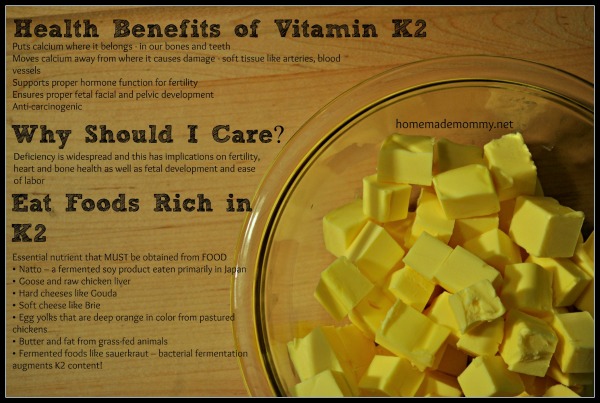The Missing Nutrient
Do you remember what launched you into the world of real food? Was it reading Michael Pollan’s book, The Omnivore’s Dilemma or watching Food, Inc and learning where your food really came from? Was it getting your hands on a copy of Nourishing Traditions? Stick with this post because I am going to tell you how much research I had to do to get to where I am today and share how you can get to the same point a lot more quickly from just one book. I had read or seen all of the above, but what really hit home for me was learning about Dr. Weston A Price’s research from the 1930’s. Some of this is in Nourishing Traditions but most of it was lost on me until I saw this video excerpt from Nourishing Our Children summarizing Dr. Price’s findings and posing the question to the viewer: can we be well-fed but still be malnourished? The research they were summarizing is contained in Dr. Price’s book, Nutrition and Physical Degeneration.
Update: The Beautiful Babies eCourse is 30% off for my readers through Nov 8th! Scroll down to the end to get the Coupon Code.
For those that are new to this blog, Dr. Price was a dentist from the 1930’s who was looking for an answer to one question – why were so many more children coming into his practice with crooked teeth and dental carries (cavities) than ever before? Remember – he lived at a time when processed foods made with white flour and sugar and vegetable oils were just exploding onto the market. He was lucky that he lived at that exact moment in time because he was able to go back to traditional cultures that did not yet eat these modern foods and analyze what they ate and how they fared on that diet. He highlighted one nutrient in particular which he called ‘Activator X’ that he felt was the missing nutrient in the children who ended up with faces too narrow to accommodate straight teeth and properly formed sinus cavities. He then experimented in giving foods with this special nutrient to mothers who were looking to conceive and voila! They had children with properly formed faces.
Stop reading here if you think I have fallen off my rocker. I mean, isn’t facial structure related to genetics? Continue reading if you are as intrigued as I was…
Is Activator X Really Vitamin K2?
I started doing some research into this ‘activator X’ and found some articles that seemed to point to it being Vitamin K2. I didn’t know anything about this vitamin and found my way to a book called Vitamin K2 and the Calcium Paradox: How a Little-Known Vitamin Could Save Your Life. Let’s just say that it was only after reading this book and understanding the importance of this nutrient that I committed more and more of my time to this blog to share vital information about real food with all of you.
Vitamin K2 is one of the fat soluble vitamins in the same class as Vitamin A and D. We have been seeing so much in the media about the importance of Vitamin D. I think we are on the verge of seeing a lot more about Vitamin K2. The reason K2 research has been late to the party of the discussion of nutrients is because Vitamin K1 and K2 were considered to be variations of the same vitamin. Vitamin K1 is responsible for blood clotting and therefore it is pretty evident if an individual is deficient in that nutrient. Quite simply, if you are deficient in K1 you would have a very clear bleeding disorder. Case closed … or so they thought. It is now known that K2 has a very different role than K1. It was finally documented in 1975 by the Harvard Medical School that a K2 dependent protein is a critical factor in depositing calcium into our bones vs. calcification of soft tissue to prevent osteoporosis and dental cavities. Research has taken off ever since on K2 and it is still coming in, but what is known is that deficiency in this nutrient has implications on heart and bone health and cancer and probably some other serious health conditions.
Apparently Vitamin K2 deficiency is very widespread. When you read the list of foods that Vitamin K2 is in you will understand why. How many of these foods do you or anyone you know eat on a regular basis?
Foods rich in Vitamin K2 (from most to least)
- Natto – a fermented soy product eaten primarily in Japan
- Goose and raw chicken liver
- Hard cheeses like Gouda
- Soft cheese like Brie
- Egg yolks that are deep orange in color from pastured chickens
- Butter and fat from grass-fed animals (where to buy high vitamin butter oil)
- Fermented foods like sauerkraut – bacterial fermentation augments K2 content!
This is a list of foods that are either repugnant to most of us (in the case of the natto or raw liver) or are foods we have been told are bad for us because they could cause heart disease. The other issue is that most animal products the average person purchases are grain fed. When we removed animals from eating pasture outside (and exposed to Vitamin D), we inadvertently removed Vitamin K2 from our diets and we are just now dealing with the implications of this change.
Vitamin K2 for Normal Fetal Development
We are so focused these days on all of the health problems we experience in aging including heart disease, cancer, diabetes and Alzheimer’s that we might be overlooking how we can influence change on future generations. Could it be possible that if we, women and men of child-bearing age, changed our current diets to include more on the list above that we could have a profound impact on the development of our babies? What if we could prevent our future children from having faces that are too narrow to fit all of their teeth and from having sinus cavities that are too narrow for proper drainage therefore causing more sinus and ear infections and colds? Have we become so desensitized to orthodontic work that we feel this is normal? It is just cosmetic right? Apparently this is *not normal*. We just think it is normal because we all have this issue now. Our jaw size is not pre-destined and having a face that developed too narrowly can cause a whole host of health issues including airway obstruction, mouth breathing, TMJ, sleep disturbances, posture issues, etc. According to Vitamin K2 and the Calcium Paradox, the latest research on Vitamin K2 and K2-dependent proteins shows that it is MGP (matrix GLA protein) that is indeed the key to normal facial development in a fetus.
“Preventing uncontrolled and inappropriate calcification is the key to healthy attractive facial proportions. Here’s how it works. In the fetus, the developing nasal septal cartilage, the piece of cartilage that separates the two nasal cavities and forms your nostrils, is normally rich in the vitamin K2-dependent MGP. Functional vitamin K2-activated MGP is necessary to maintain growing cartilage in a normal, non-calcified state. When MGP is left inactive by a lack of Vitamin K2, premature calcification in the nasal cartilage stunts the growth of the face. Early hardening of the nose and jaw prevents these facial structures from reaching their widest, healthiest proportions. This results in an underdevelopment of the middle and lower third of the face, a condition technically called maxillonasal hypoplasia. Vitamin K deficiency in the first trimester of pregnancy results in maxillonasal hypoplasia in the newborn, with subsequent facial and orthodontic implications.”
Dr. Price’s research demonstrated this was not genetic. In fact, he documented the facial structure of offspring from parents from many different traditional cultures when they were eating modern foods and when they were eating a prescribed diet of “milk, green vegetables, sea foods, organs from animals and the reinforcement of the fat soluble vitamins by very high vitamin butter (source of K2) and cod liver oil”. The children born to the same parents were visibly different – the ones who consumed modern foods before and during pregnancy were born with narrow faces and all that comes with it, and the ones who consumed ample amounts of Vitamins A, D and K2 had broad faces and none of the associated issues.
We can only move forward
As a woman looking to conceive my first child, I sought out information that would help me in that process. I actually didn’t get a lot of nutritional help – just a prescription for some prenatal vitamins. So much attention is put on folate as being a vital nutrient all women need to prevent spina bifida. Why not vitamin K2? When I did get pregnant (luckily after 6 months of trying), I followed all of the guidelines for women who are pregnant – don’t drink alcohol, don’t eat raw cheeses or deli meats or sushi, and take these prescription drugs for your ‘morning’ sickness (which for me was all day sickness for 4 months straight). I didn’t think much about what nutrients I wasn’t getting. I ate plenty of fruits and vegetables and I was already sourcing a lot of organic foods. I felt I was doing more than most. So it really threw me for a loop when I stopped to consider what traditional peoples used to eat and how they focused very highly on nutrient density. Nothing I did with my first pregnancy came close to what was required.
As I said, it took a lot of research and a lot of time for me to find this information and I know most of you do not have the time to go on this wild goose chase to get this vital information.
I do not share this to make you feel guilty about what has been done. I have had my share of guilt with my own experience but we cannot look back. We can only move forward as we work as mothers to dig ourselves and our society out of this proverbial hole of undernourishment. While there are no guarantees as we are deep in this hole, we can again try our hardest to have healthy beautiful babies with robust, vibrant health.

















Book ordered!!!
Thank you so much for posting this. I pinned it and am sharing with my daughter-in-law, who is expecting baby #2!
Thanks, Lindsey, for spreading the word about the importance of vitamin K2 for healthy babies! This was really the most important part of my book for me.
Lindsey, thanks for your research. I know you’re tied up at the moment (and I’m sending love your way), but I was wondering if you have a recommendation of a brand you like for taking Nattokinase. I am not about to try to make it! And would prefer a pill form.
Thanks, Ashley
Hello, I am desperately trying to find out if kefir made with pasteurized milk will still contain vitamin K2? Thanks for any info or wisdom you can share with me.
I take Calcium with Vitamin K2.
Vitamin K2 helps direct calcium to the bones and teeth(where it belongs), keeping the calcium from attaching itself to the arteries.
Natural sources are Natto, egg yolk, butter…problem is I don’t like the cholesterol in egg yolk and butter and I don’t like the taste of Natto.
I found this online and order it online as well http://tinyurl.com/q8fjc93
It is made in USA; head office is in California. That’s why delivery and handling is free in USA. Delivery took about 3 to 7 days. It has Omega 3+ as well as CoQ10 and Vitamin K2 and it is Extended release(long-term effect).